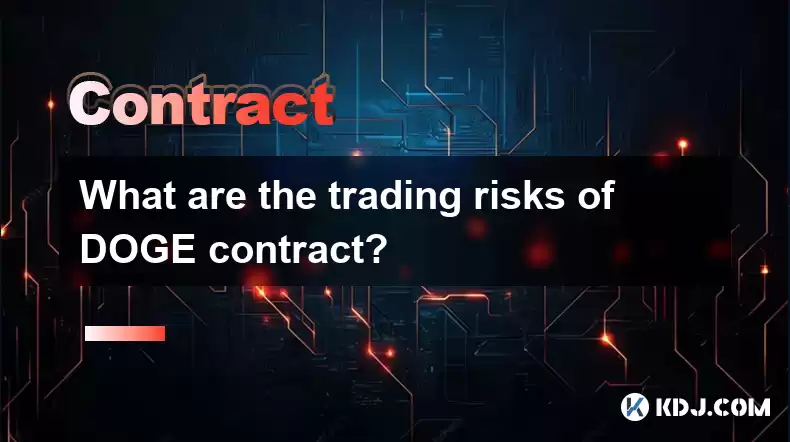-
 Bitcoin
Bitcoin $116700
0.24% -
 Ethereum
Ethereum $3973
4.34% -
 XRP
XRP $3.283
7.68% -
 Tether USDt
Tether USDt $1.000
0.01% -
 BNB
BNB $789.8
2.27% -
 Solana
Solana $176.2
3.31% -
 USDC
USDC $0.9999
0.00% -
 Dogecoin
Dogecoin $0.2238
5.14% -
 TRON
TRON $0.3389
-0.51% -
 Cardano
Cardano $0.7907
4.03% -
 Stellar
Stellar $0.4527
10.02% -
 Hyperliquid
Hyperliquid $41.07
4.27% -
 Sui
Sui $3.794
1.77% -
 Chainlink
Chainlink $19.49
10.40% -
 Bitcoin Cash
Bitcoin Cash $580.9
0.74% -
 Hedera
Hedera $0.2617
4.32% -
 Avalanche
Avalanche $23.41
3.67% -
 Ethena USDe
Ethena USDe $1.001
-0.03% -
 Litecoin
Litecoin $122.4
1.38% -
 Toncoin
Toncoin $3.364
1.49% -
 UNUS SED LEO
UNUS SED LEO $8.988
0.37% -
 Shiba Inu
Shiba Inu $0.00001295
2.82% -
 Uniswap
Uniswap $10.62
5.75% -
 Polkadot
Polkadot $3.922
4.46% -
 Dai
Dai $1.000
0.01% -
 Bitget Token
Bitget Token $4.494
2.15% -
 Monero
Monero $268.0
-1.30% -
 Cronos
Cronos $0.1523
3.68% -
 Pepe
Pepe $0.00001127
4.43% -
 Aave
Aave $285.4
4.85%
What are the trading risks of DOGE contract?
Trading DOGE contracts carries substantial risks due to extreme volatility, leverage amplifying losses, liquidation potential, susceptibility to market manipulation, lack of intrinsic value, and regulatory uncertainty.
Mar 24, 2025 at 02:01 am

Key Points:
- High Volatility: DOGE's price is highly susceptible to rapid and unpredictable swings, significantly increasing the risk of substantial losses in contract trading.
- Leverage Magnification: Using leverage amplifies both profits and losses, potentially leading to liquidation even with small price movements against your position.
- Liquidation Risk: If the market moves against your leveraged position, you risk liquidation, meaning your position is automatically closed at a loss to cover your margin requirements.
- Market Manipulation: DOGE, being a meme coin, is potentially more vulnerable to market manipulation, affecting contract prices unpredictably.
- Lack of Intrinsic Value: DOGE lacks inherent value compared to assets with underlying utility or tangible backing, making its price solely dependent on speculation and market sentiment.
- Regulatory Uncertainty: The regulatory landscape for cryptocurrencies remains unclear, introducing additional risks for contract traders.
What are the trading risks of DOGE contract?
Dogecoin (DOGE) contracts, like other cryptocurrency contracts, present a range of significant risks that traders must understand before engaging. These risks stem from the inherent volatility of the cryptocurrency market, the use of leverage, and the unique characteristics of DOGE itself. Ignoring these risks can lead to substantial financial losses.
High Volatility and Price Swings:
DOGE's price is notoriously volatile. It can experience dramatic price swings in short periods, often driven by social media trends, news events, and speculative trading. This volatility significantly increases the risk of losing money, even with seemingly small market movements. A sudden price drop can quickly wipe out your investment if you're not prepared.
Leverage and Margin Calls:
Contract trading often involves leverage, which allows you to control a larger position than your initial investment. While leverage magnifies potential profits, it also dramatically increases your risk. A small adverse price movement can quickly lead to a margin call, where you're required to deposit more funds to maintain your position. Failure to meet a margin call results in liquidation.
Liquidation Risk:
Liquidation is the forced closure of your trading position by the exchange when your margin account balance falls below the required maintenance margin. This occurs when the market moves against your position, resulting in a loss that exceeds your available margin. Liquidation can happen rapidly and unexpectedly, potentially leading to significant financial losses.
Market Manipulation and Pump-and-Dump Schemes:
DOGE's popularity makes it susceptible to market manipulation. Pump-and-dump schemes, where coordinated efforts artificially inflate the price before a sudden sell-off, are a considerable risk. These schemes can result in substantial losses for those caught in the downturn. Due diligence and careful market observation are crucial.
Lack of Intrinsic Value:
Unlike some cryptocurrencies with underlying technology or utility, DOGE's value is primarily driven by speculation and market sentiment. It lacks inherent value, making its price highly susceptible to changes in market mood. This lack of intrinsic value amplifies the risk of price crashes.
Regulatory Uncertainty:
The regulatory landscape surrounding cryptocurrencies is constantly evolving and remains uncertain in many jurisdictions. Changes in regulations can significantly impact the cryptocurrency market and the trading of DOGE contracts, adding another layer of risk. Staying updated on regulatory developments is essential.
Technical Analysis Challenges:
Predicting DOGE's price movements is exceptionally challenging due to its high volatility and susceptibility to speculative trading. Traditional technical analysis indicators may prove less reliable, making informed trading decisions more difficult. Thorough research and a cautious approach are paramount.
Emotional Trading:
The thrill of potential gains can lead to impulsive and emotional trading decisions. Fear and greed can cloud judgment, increasing the risk of making poor trading choices. Disciplined risk management and a well-defined trading plan are crucial to mitigate this risk.
Exchange Risks:
The security and reliability of the cryptocurrency exchange you use also play a crucial role. Choose a reputable exchange with robust security measures to minimize the risk of hacking, fraud, or platform malfunctions that could affect your trading. Thoroughly research exchanges before using them.
Counterparty Risk:
When trading contracts, you are essentially entering into an agreement with the exchange. There's a risk that the exchange itself might become insolvent or fail to fulfill its obligations, potentially leading to losses. Choosing a well-established and financially sound exchange can help mitigate this risk.
Frequently Asked Questions:
Q: What is the biggest risk associated with DOGE contract trading?
A: The biggest risk is the extreme volatility of DOGE's price, exacerbated by the use of leverage, which can lead to rapid and substantial losses, even liquidation.
Q: How can I minimize the risk of liquidation when trading DOGE contracts?
A: Use leverage cautiously, start with smaller positions, set stop-loss orders to limit potential losses, and carefully monitor market movements.
Q: Is DOGE contract trading suitable for beginners?
A: No, due to the high risks involved, DOGE contract trading is generally not recommended for beginners. It requires a thorough understanding of the market, risk management techniques, and a significant tolerance for risk.
Q: Are there any strategies to mitigate the risk of market manipulation in DOGE?
A: Diversification, thorough research, careful risk management, and staying informed about market news and trends can help mitigate the impact of market manipulation. However, complete avoidance is unlikely.
Q: What role does regulatory uncertainty play in DOGE contract trading risks?
A: Regulatory uncertainty introduces an unpredictable element to the market, potentially leading to sudden changes in trading conditions and affecting the price of DOGE and the viability of trading platforms. This adds another layer of risk that cannot be fully controlled.
Disclaimer:info@kdj.com
The information provided is not trading advice. kdj.com does not assume any responsibility for any investments made based on the information provided in this article. Cryptocurrencies are highly volatile and it is highly recommended that you invest with caution after thorough research!
If you believe that the content used on this website infringes your copyright, please contact us immediately (info@kdj.com) and we will delete it promptly.
- Coinbase, Cosmos, and dYdX: Navigating the Crypto Currents
- 2025-08-09 06:30:16
- BNB Price, Altcoins, and Predictions: What's the Buzz?
- 2025-08-09 06:30:16
- Crypto Presale Projects Primed for Gains in 2025: A New Yorker's Take
- 2025-08-09 06:50:15
- Ruvi AI: The Millionaire Maker Poised for a Price Spike?
- 2025-08-09 06:50:15
- Cold Wallet, CoinMarketCap, Cardano & XRP: Navigating Crypto's Next Big Wave
- 2025-08-09 07:10:15
- Hedera (HBAR) Price Surge: Market Cap Soars, What's Next?
- 2025-08-09 07:10:15
Related knowledge

What is the difference between realized and unrealized PNL on KuCoin?
Aug 09,2025 at 01:49am
Understanding Realized and Unrealized PNL on KuCoinWhen trading on KuCoin, especially in futures and perpetual contracts, understanding the distinctio...

How does KuCoin Futures compare against Binance Futures in terms of features?
Aug 09,2025 at 03:22am
Trading Interface and User ExperienceThe trading interface is a critical component when comparing KuCoin Futures and Binance Futures, as it directly i...

What is the distinction between mark price and last price on KuCoin?
Aug 08,2025 at 01:58pm
Understanding the Basics of Price in Cryptocurrency TradingIn cryptocurrency exchanges like KuCoin, two key price indicators frequently appear on trad...

What are the specific maker and taker fees on KuCoin Futures?
Aug 08,2025 at 08:28am
Understanding Maker and Taker Fees on KuCoin FuturesWhen trading on KuCoin Futures, users encounter two primary types of fees: maker fees and taker fe...

Can you explain the difference between cross margin and isolated margin on KuCoin?
Aug 09,2025 at 02:57am
Understanding Margin Trading on KuCoinMargin trading on KuCoin allows traders to borrow funds to increase their trading position beyond their actual c...

How can I open a long position on KuCoin Futures?
Aug 09,2025 at 02:07am
Understanding KuCoin Futures and Long PositionsOpening a long position on KuCoin Futures means you are speculating that the price of a cryptocurrency ...

What is the difference between realized and unrealized PNL on KuCoin?
Aug 09,2025 at 01:49am
Understanding Realized and Unrealized PNL on KuCoinWhen trading on KuCoin, especially in futures and perpetual contracts, understanding the distinctio...

How does KuCoin Futures compare against Binance Futures in terms of features?
Aug 09,2025 at 03:22am
Trading Interface and User ExperienceThe trading interface is a critical component when comparing KuCoin Futures and Binance Futures, as it directly i...

What is the distinction between mark price and last price on KuCoin?
Aug 08,2025 at 01:58pm
Understanding the Basics of Price in Cryptocurrency TradingIn cryptocurrency exchanges like KuCoin, two key price indicators frequently appear on trad...

What are the specific maker and taker fees on KuCoin Futures?
Aug 08,2025 at 08:28am
Understanding Maker and Taker Fees on KuCoin FuturesWhen trading on KuCoin Futures, users encounter two primary types of fees: maker fees and taker fe...

Can you explain the difference between cross margin and isolated margin on KuCoin?
Aug 09,2025 at 02:57am
Understanding Margin Trading on KuCoinMargin trading on KuCoin allows traders to borrow funds to increase their trading position beyond their actual c...

How can I open a long position on KuCoin Futures?
Aug 09,2025 at 02:07am
Understanding KuCoin Futures and Long PositionsOpening a long position on KuCoin Futures means you are speculating that the price of a cryptocurrency ...
See all articles

























































































